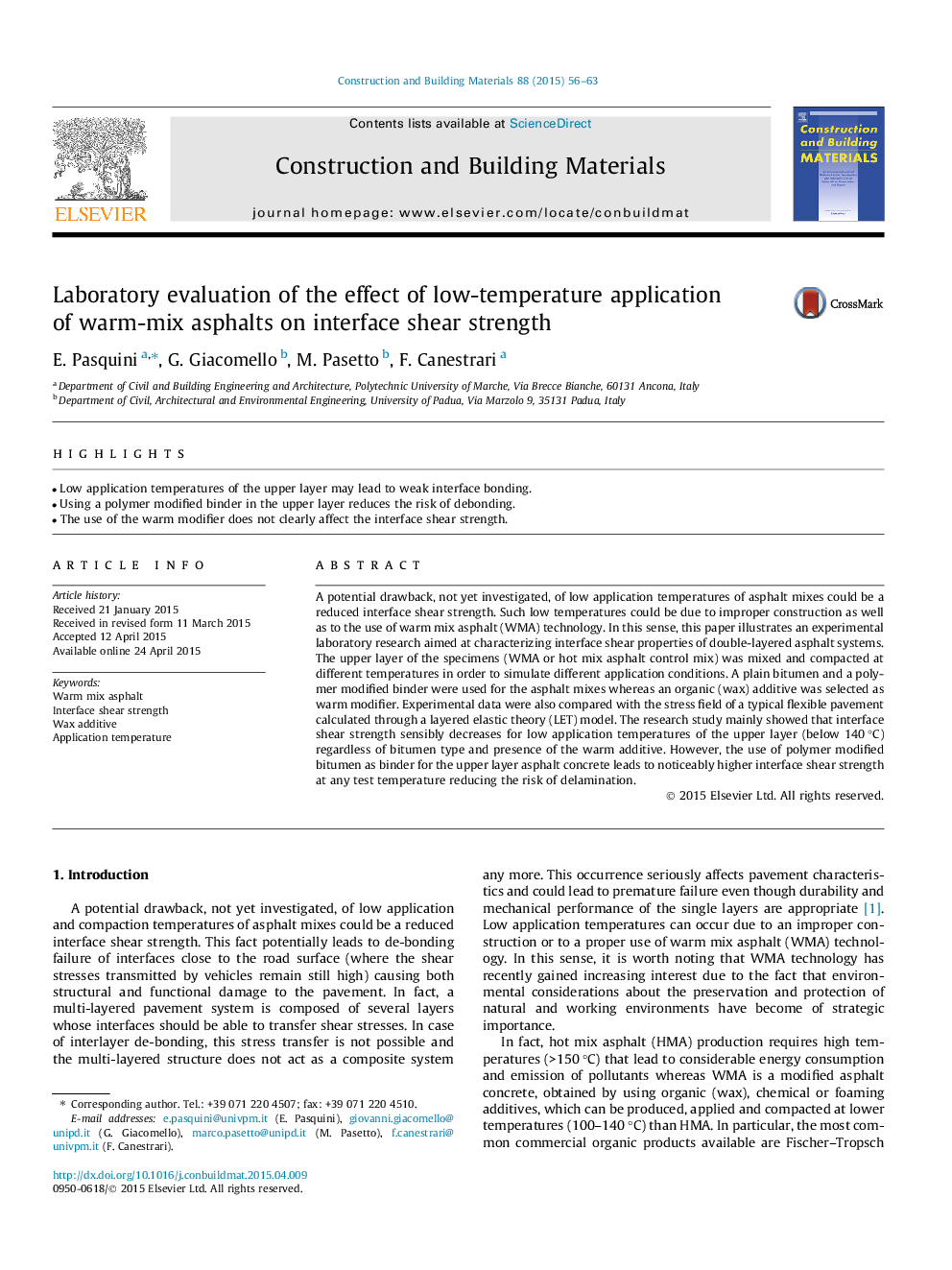| Article ID | Journal | Published Year | Pages | File Type |
|---|---|---|---|---|
| 256951 | Construction and Building Materials | 2015 | 8 Pages |
•Low application temperatures of the upper layer may lead to weak interface bonding.•Using a polymer modified binder in the upper layer reduces the risk of debonding.•The use of the warm modifier does not clearly affect the interface shear strength.
A potential drawback, not yet investigated, of low application temperatures of asphalt mixes could be a reduced interface shear strength. Such low temperatures could be due to improper construction as well as to the use of warm mix asphalt (WMA) technology. In this sense, this paper illustrates an experimental laboratory research aimed at characterizing interface shear properties of double-layered asphalt systems. The upper layer of the specimens (WMA or hot mix asphalt control mix) was mixed and compacted at different temperatures in order to simulate different application conditions. A plain bitumen and a polymer modified binder were used for the asphalt mixes whereas an organic (wax) additive was selected as warm modifier. Experimental data were also compared with the stress field of a typical flexible pavement calculated through a layered elastic theory (LET) model. The research study mainly showed that interface shear strength sensibly decreases for low application temperatures of the upper layer (below 140 °C) regardless of bitumen type and presence of the warm additive. However, the use of polymer modified bitumen as binder for the upper layer asphalt concrete leads to noticeably higher interface shear strength at any test temperature reducing the risk of delamination.
